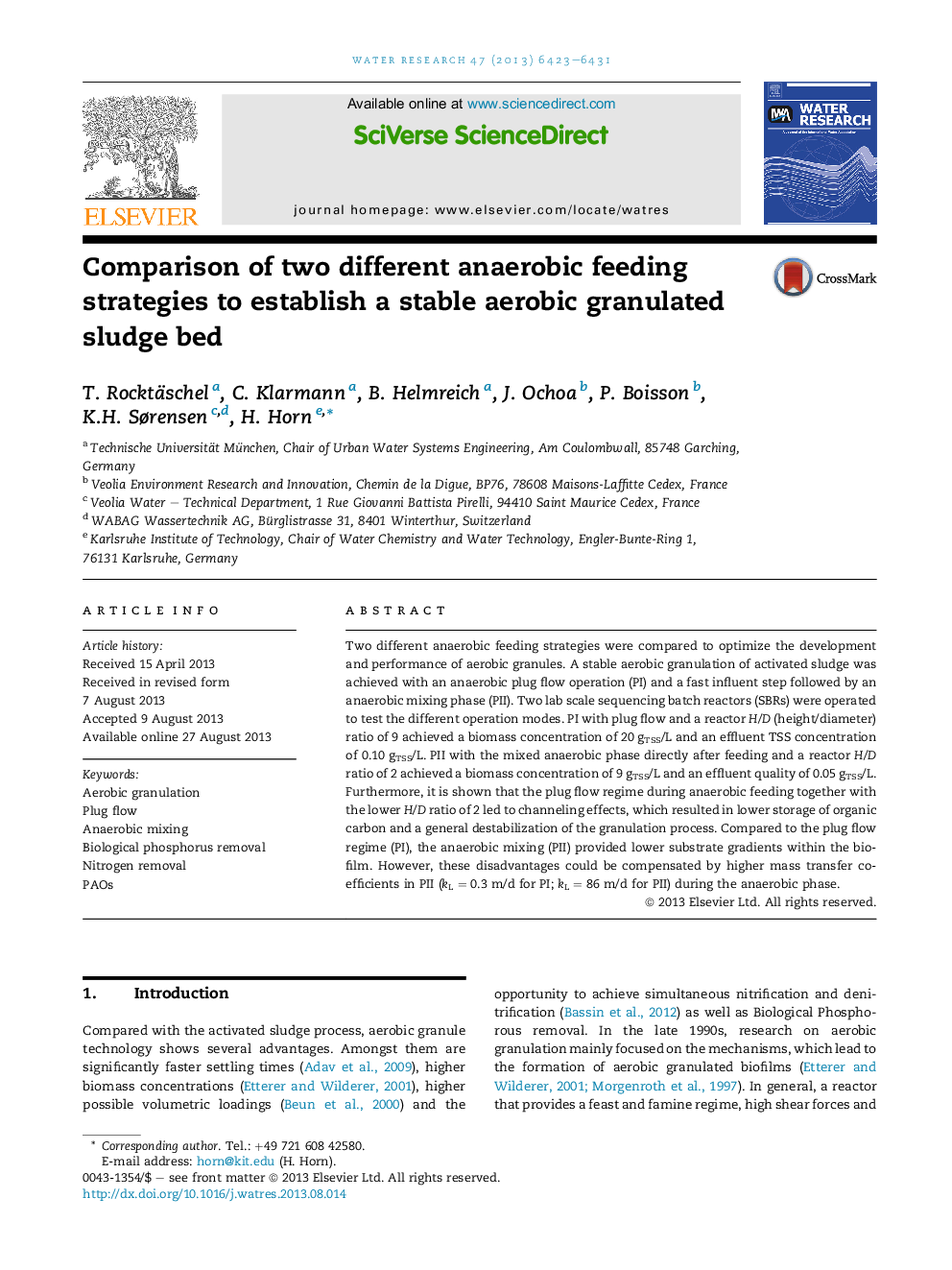| Article ID | Journal | Published Year | Pages | File Type |
|---|---|---|---|---|
| 4481894 | Water Research | 2013 | 9 Pages |
•Aerobic granulated sludge bed is possible with anaerobic plug flow and anaerobic mixed operation.•A steep substrate gradient as in plug flow operation is not necessary to develop aerobic granules.•Equal distribution of substrate independent of the reactor geometry with anaerobic feeding.•Higher specific COD uptake rates with anaerobic mixing operation.•Higher removal rates of nitrogen and phosphorus with anaerobic mixed feeding operation.
Two different anaerobic feeding strategies were compared to optimize the development and performance of aerobic granules. A stable aerobic granulation of activated sludge was achieved with an anaerobic plug flow operation (PI) and a fast influent step followed by an anaerobic mixing phase (PII). Two lab scale sequencing batch reactors (SBRs) were operated to test the different operation modes. PI with plug flow and a reactor H/D (height/diameter) ratio of 9 achieved a biomass concentration of 20 gTSS/L and an effluent TSS concentration of 0.10 gTSS/L. PII with the mixed anaerobic phase directly after feeding and a reactor H/D ratio of 2 achieved a biomass concentration of 9 gTSS/L and an effluent quality of 0.05 gTSS/L. Furthermore, it is shown that the plug flow regime during anaerobic feeding together with the lower H/D ratio of 2 led to channeling effects, which resulted in lower storage of organic carbon and a general destabilization of the granulation process. Compared to the plug flow regime (PI), the anaerobic mixing (PII) provided lower substrate gradients within the biofilm. However, these disadvantages could be compensated by higher mass transfer coefficients in PII (kL = 0.3 m/d for PI; kL = 86 m/d for PII) during the anaerobic phase.
